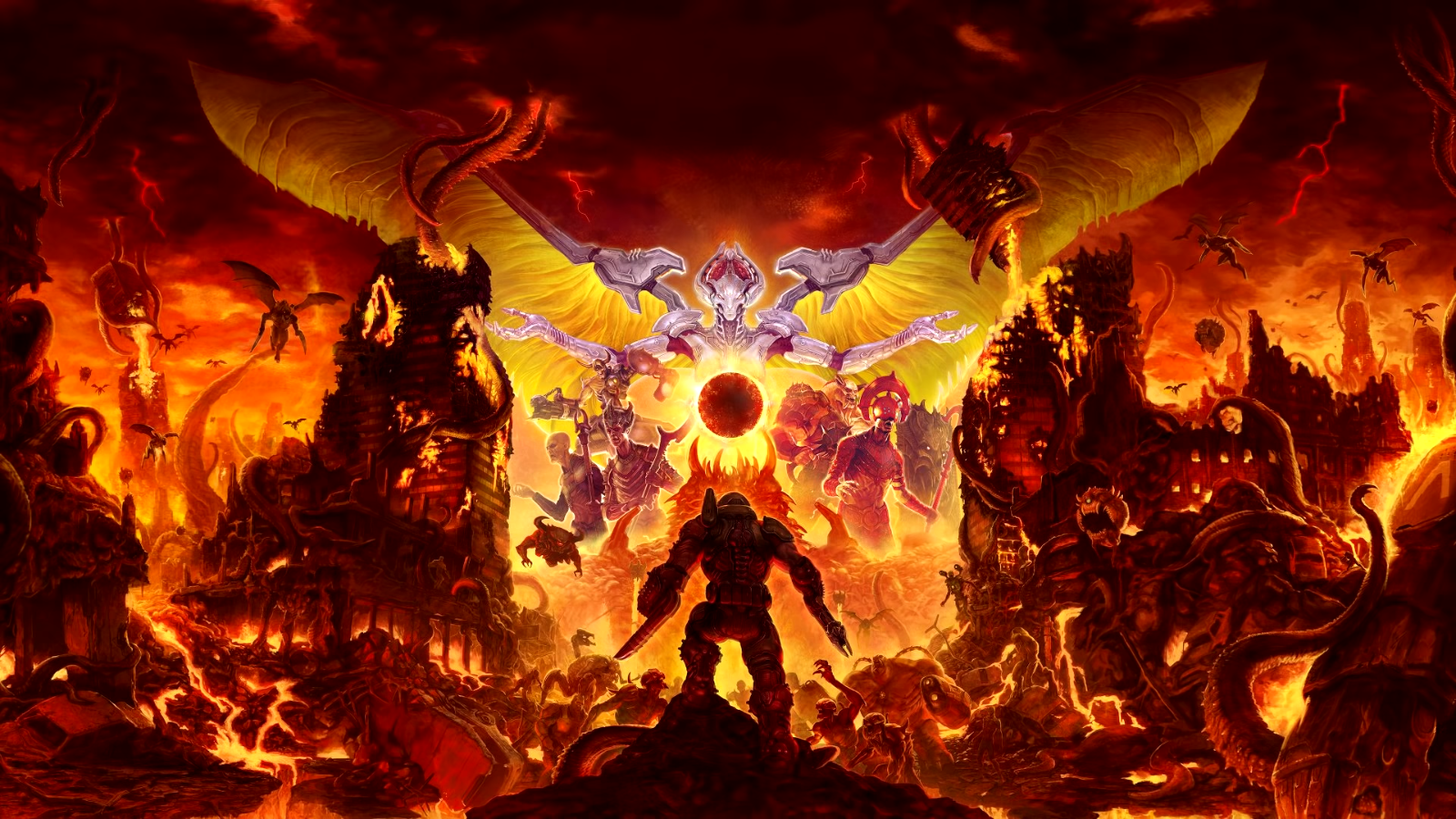Doom: Eternal, the sequel to the 2016 reboot of the decades-long series, hits stores on March 20 and promises more no-frills, fast-paced combat, extravagant blood and gore and demon-slaying backed by a heavy metal soundtrack.
The series focuses on the Doom Slayer (also known as Doomguy by fans), a figure with vague origins that has been fighting the forces of Hell for centuries. The U.S. has crafted a system to siphon energy from Hell to Earth but things go haywire when a scientist opens a portal on Mars for the demons to escape through.
In Doom (2016), the Doom Slayer is awakened and liberates Mars, while destroying the energy system. In Doom: Eternal, Hell’s forces have escaped to Earth and taken over 60% of the planet, and Doomguy is ready to rip and tear them to shreds.
Gameplay-wise, Doom differentiates itself from other first-person shooters by emphasizing constant motion. Enemies pursue the player with haste, assaulting from all directions and there is very little room to provide cover.
This is countered by the arsenal of weapons given to the player. The Doomslayer wields a shotgun, machine gun, plasma rifle, missile launcher and a chainsaw, while allowing players to get in close and perform violent and satisfying Glory Kills on weakened foes. These kills give out portions of health and ammo, thus rewarding the player for taking risks and going in guns blazing.
Additionally, every weapon can be modded with an extra power, such as a scope, explosive rounds, a high-energy charged shot, a burst of fire that stuns enemies for a few crucial seconds or mini rockets that explode on impact.
The Praetor suit is the mysterious armor donned by Doomguy, which has plenty of slots for upgrades, such as faster reload times, easier navigation of the level’s map or quicker motions when jumping or climbing ledges.
Yet some new abilities are introduced in Eternal, as a small blade is attached to the arm and allows for new brutal Glory Kills. The suit also holds an equipment launcher that can lob ice and fire grenades at demons and has a flamethrower.
Eternal also doubles down on the platforming front, as the combat arenas in the game are much larger than the 2016 game, and incorporate mechanics such as monkey bars and sticky walls. In addition, the Doom Slayer now has a dash attack to cover more ground and get the drop on demons and a grappling hook attachment to the Super Shotgun to swing on or around enemies.
This means the games’ many collectibles, such as small Doomguy plushies, Rune challenges to gain combat perks, hidden classic Doom levels and Praetor Tokens will be even more out of reach and require more creativity to find than before.
Creative director of the game Hugo Martin stated that “You’ve seen more in the first two-to-three levels in this game than you do in the entire Doom 2016, without question,” in an interview with Gamespot.
Related Articles

Eternal will have twice as many demon types as the last game, including a mix of new enemies and classic foes from older Doom games.
The notable difficulty of the game will be tweaked somewhat from the Doom reboot. A new system, called “Destructible Demons” rewards players for shooting foes in their weak points, such as taking out the devastating arm cannon of the Mancubus.
In addition, the player can find green helmets that act as extra lives. If the Doom Slayer perishes in combat with this power-up, they will start fighting right where they left off, instead of being forced to the last checkpoint.
Another new mechanic is a hub world, called the Fortress of Doom. Between missions, the player can unlock gates that require collectibles from the game to open that hold several goodies such as weapon mods, upgrades or new weapons entirely.
The basement of the fort also holds the Ripatorium, a training area where new or old skills can be practiced. One conspicuous addition is a giant mech-like Praetor suit being constructed in the background.
One aspect of the 2016 reboot making a grand return is the soundtrack, helmed by Mick Gordon, an Australian composer that also worked on three of the recent Wolfenstein soundtracks.
Gordon’s blend of electronic heavy metal won several awards and he doesn’t plan on changing the formula up too much, while still providing fans with new tweaks on a familiar sound.
“I always feel really disappointed when I play a game and I think the music is great, and then by the time the second one comes around, the music is completely different and it loses the feel of what you liked about the game in the first place,” Gordon said in an interview with fandom.wikia.com. “We spent so much time defining the sound of DOOM, we’re not going to abandon it now.”
The game will forgo trappings of other modern franchises and does not feature microtransactions or an in-game store to unlock cosmetics with real money. The only way to purchase new skins for Doomguy is through hard-earned XP by playing the game.
“Eternal is a $60 game,” Martin said on Facebook, “not a free-to-play game or a mobile game—we are giving u a complete experience with no store just like you’d expect.”
Those that pre-order Doom: Eternal will be getting an additional bonus: a free digital download of Doom 64, a title in the series developed by Midway games in 1997 for the Nintendo 64 that acts as a sequel to the original Doom games.
The 23-hour campaign (double the length of the 2016 reboot) comes out on March 20 for PS4, Xbox One, Google Stadia and PC, with a Nintendo Switch port arriving on a later date.
Henry Wolski
Staff Writer

